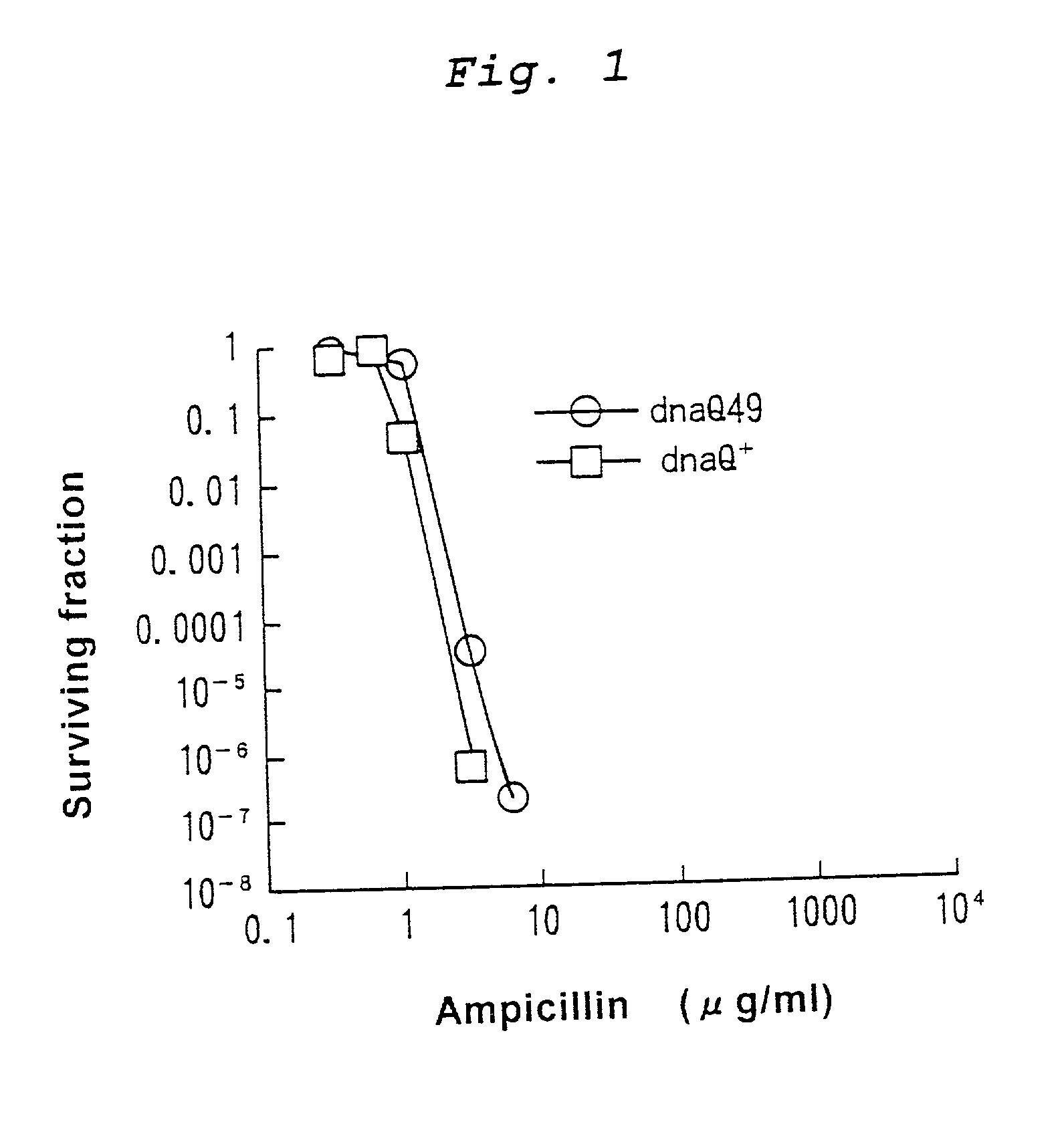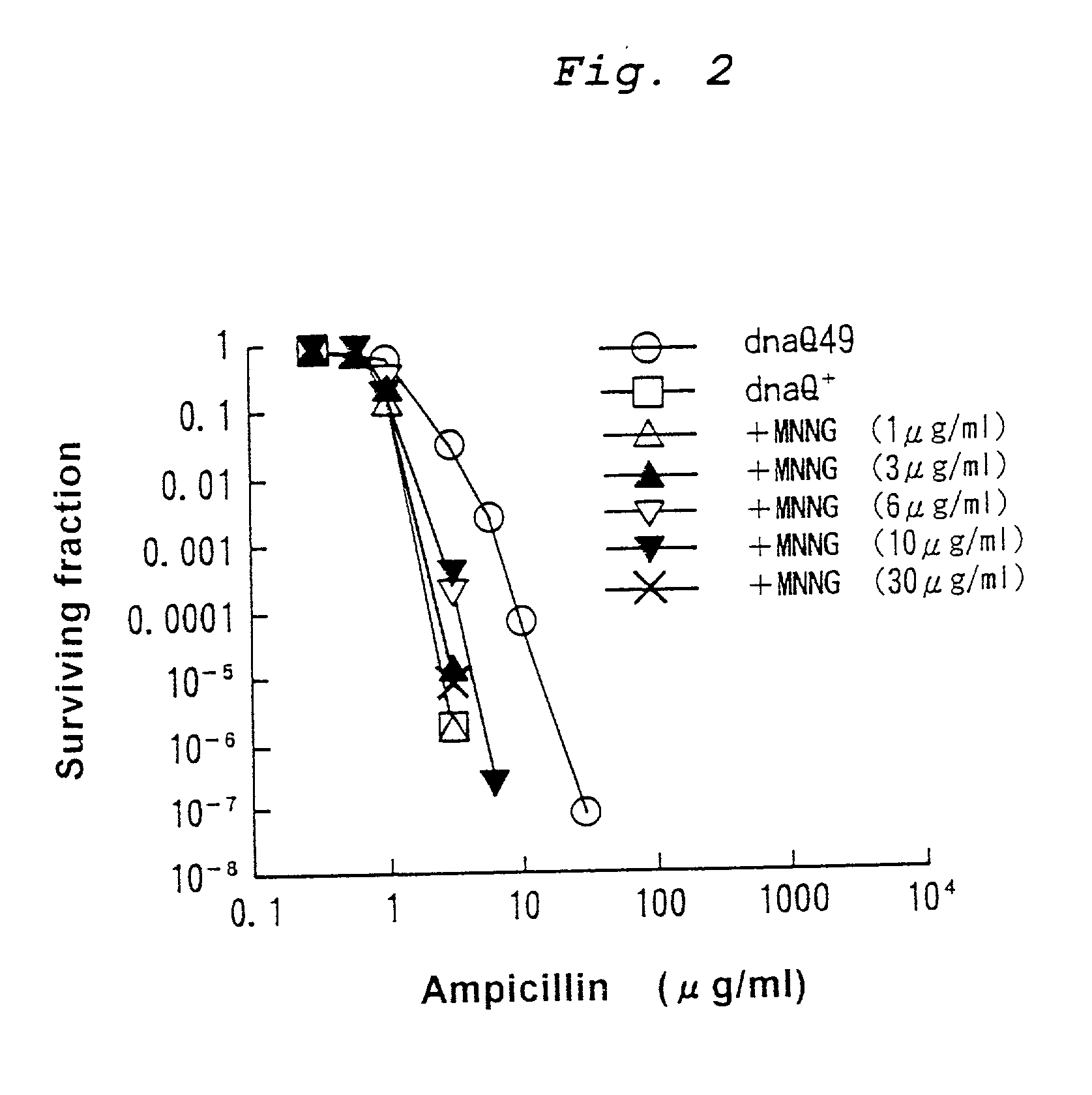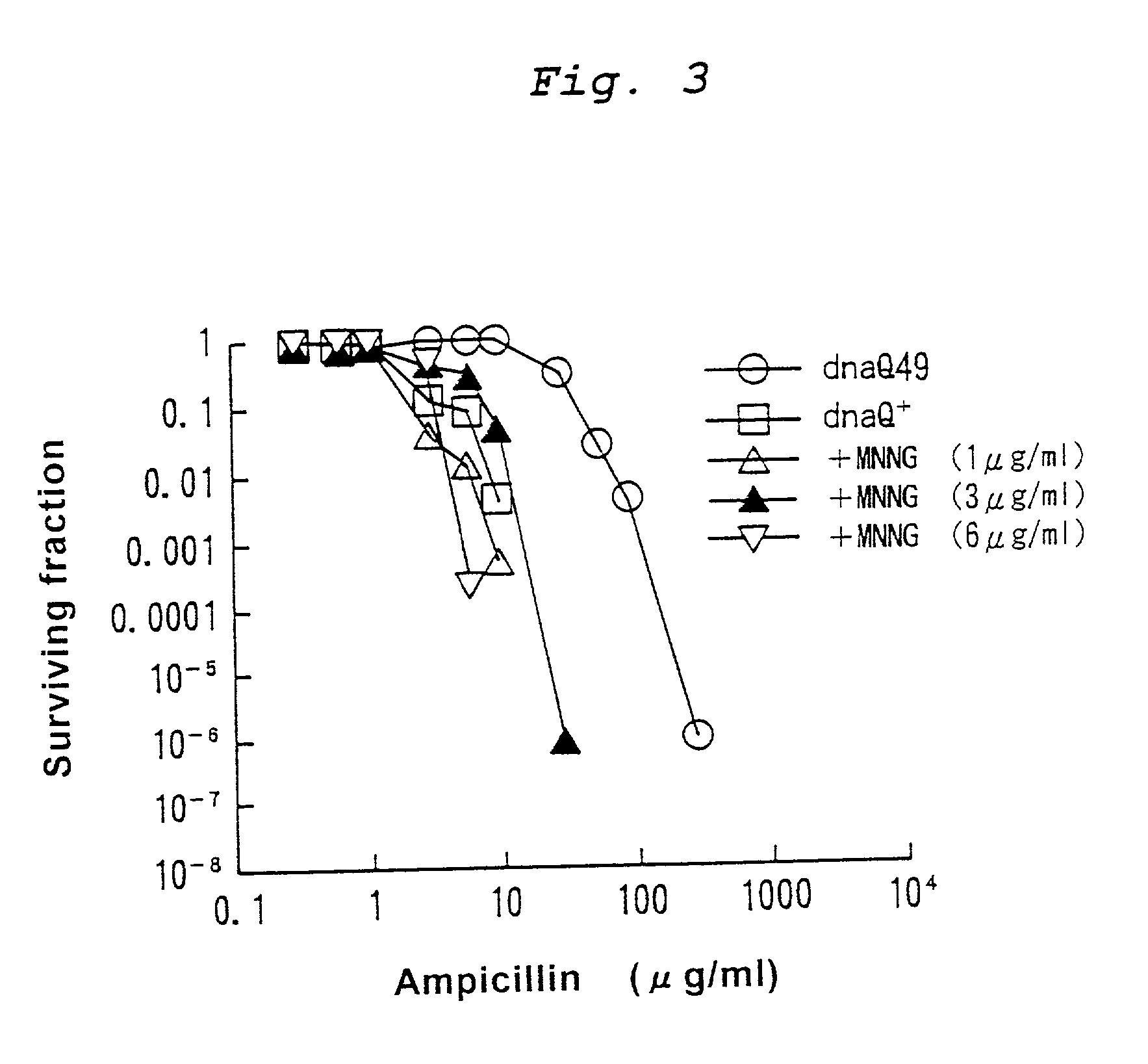Mutagenesis method
a gene and mutagenesis technology, applied in the field of mutagenesis method, can solve the problems of poor efficiency, no production of desired mutants, and efficient introduction of mutations, so as to organism individuals, reduce the risk of extinction of mutated cells, and effectively and efficiently introduce mutations
- Summary
- Abstract
- Description
- Claims
- Application Information
AI Technical Summary
Benefits of technology
Problems solved by technology
Method used
Image
Examples
example 2
[0053] Mutation was introduced into dnaQ49 strain by the same way as in Example 1 to prepare drug-resistant microorganisms to each of ofloxacin, nalidixic acid and streptomycin. As a result, microorganisms resistant to 500 .mu.g / ml of ofloxacin, to 7,000 .mu.g / ml of nalidixic acid and to 26,000 .mu.g / ml of streptomycin were obtained as shown in Tables 3-5.
3 TABLE 3 Mutagenesis Concentration of Treatment(s) for Ofloxacin (.mu.g / ml) Incubated Days 1 time 0.001 11 2 times 0.01 6 3 times 0.1 9 4 times 1 4 5 times 10 3 6 times 30 3 7 times 50 3 8 times 60 3 9 times 70 3 10 times 80 3 11 times 90 3 12 times 100 7 13 times 120 3 14 times 132 3 15 times 144 3 16 times 150 7 17 times 156 3 18 times 168 2 19 times 180 2 20 times 210 2 21 times 240 2 22 times 270 2 23 times 300 2 24 times 320 6 25 times 330 4 26 times 340 4 27 times 350 3 28 times 360 4 29 times 370 3 30 times 380 4 31 times 400 2 32 times 425 3 33 times 450 3 34 times 475 3 35 times 500 3 *1) Incubation before themutagenesis ...
example 3
[0058] Mutation was introduced into dnaQ49 strain by the same way as in Example 1 to prepare an alkali-resistant microorganism. The result is that, as shown in Table 7, a resistant microorganism up to pH 9.8 was obtained by mutagenesis for 12 times.
7 TABLE 7 Mutagenesis Treatment(s) for pH Incubated Days 1 time 9.5 2 2 times 9.4 2 3 times 9.4 3 4 times 9.4 2 5 times 9.5 3 6 times 9.5 2 7 times 9.5 2 8 times 9.7 39 9 times 9.7 2 10 times 9.7 3 11 times 9.7 16 12 times 9.8 *1) Incubation before the mutagenesis was carried out at pH 9.5 and 24.degree. C. for 48 hours *2) Under the mutagenesis condition, incubation was carried out at 37.degree. C. *3) dnaQ+ strain (wild type) did not grow at pH 9.5.
example 4
[0059] It has been known that a codon "att" at the positions 4249-4251 of ampC gene of Escherichia coli (GenBank Accession No. J01611, J01583) is apt to be mutated to "ttt". Now, it was investigated whether the mutation of this site was caused by mutation of leading chain or by mutation of lagging chain.
[0060] 1. Methods
[0061] Since it has been known that ampC gene of E. coli is synthesized as a lagging chain, a-chain plus addition sequence (SEQ ID NO: 1) at the positions 4260-4212 was used as a probe for measuring the fidelity of lagging chain. In addition, a+ chain plus addition sequence (SEQ ID NO: 2) at the positions 4235-4281 was used as a probe for measuring the fidelity of leading chain.
[0062] Further, an oligonucleotide of SEQ ID NO: 3 was used as a linker DNA for measuring the fidelity of lagging chain and leading chain.
[0063] First, dnaQ49 was incubated at 37.degree. C. for a period of one generation (time required for OD.sub.550 of a microorganism suspension becomes two-f...
PUM
| Property | Measurement | Unit |
|---|---|---|
| temperature | aaaaa | aaaaa |
| temperature | aaaaa | aaaaa |
| concentration | aaaaa | aaaaa |
Abstract
Description
Claims
Application Information
 Login to View More
Login to View More - R&D
- Intellectual Property
- Life Sciences
- Materials
- Tech Scout
- Unparalleled Data Quality
- Higher Quality Content
- 60% Fewer Hallucinations
Browse by: Latest US Patents, China's latest patents, Technical Efficacy Thesaurus, Application Domain, Technology Topic, Popular Technical Reports.
© 2025 PatSnap. All rights reserved.Legal|Privacy policy|Modern Slavery Act Transparency Statement|Sitemap|About US| Contact US: help@patsnap.com



